UPSC Daily Current Affairs: 13th September 2024 | Current Affairs & Hindu Analysis: Daily, Weekly & Monthly PDF Download
GS3/Economy
India to partner for European Hydrogen Week
Source: AIR
Why in news?
India has been designated as the exclusive partner for the upcoming European Hydrogen Week, scheduled for November 2024.
About European Hydrogen Week
- European Hydrogen Week is an annual event organized by the European Commission, Hydrogen Europe, and other stakeholders.
- The event serves as a platform for discussions on future hydrogen technologies and policy developments.
- It plays a crucial role in outlining the contribution of hydrogen to decarbonizing Europe’s economy.
- The week features various conferences, exhibitions, and networking opportunities focused on green hydrogen.
- Key themes include the development, deployment, and scaling of green hydrogen within the European Green Deal framework.
- The event aims to support the EU’s climate-neutrality targets for 2050.
Significance of India’s Partnership
- Strengthening Green Energy Goals: This partnership aligns India with global initiatives focused on decarbonizing industries and energy systems, reinforcing its commitment to the Paris Agreement and the target of Net Zero by 2070.
- Access to Advanced Hydrogen Technologies: India stands to gain access to cutting-edge hydrogen technologies from Europe, enhancing its capabilities in production, storage, and transportation of green hydrogen.
- Boosting Technological Innovation: The partnership will facilitate collaborative research and development, enabling India to develop cost-effective hydrogen solutions and foster domestic clean energy innovation.
- Building Global Leadership: This initiative positions India as a global leader in the green hydrogen sector, underscoring its commitment to climate change mitigation and sustainable development.
GS3/Economy
Is it time for India to introduce a Universal Basic Income?
Source: The Hindu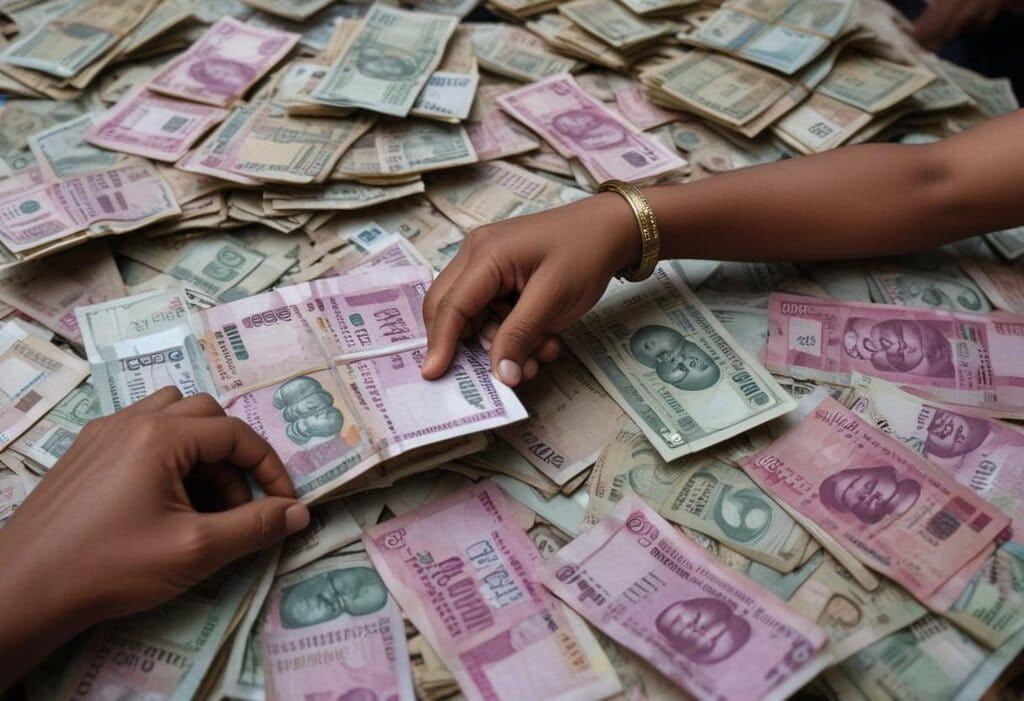
Why in News?
The ongoing rise in jobless growth, largely fueled by automation and artificial intelligence (AI), has exacerbated inequality in many nations, spurring discussions about the potential implementation of Universal Basic Income (UBI).
What does the ILO say on Inflation and unemployment in India?
- The International Labour Organization (ILO) highlights that a significant 83% of those unemployed in India are youths, a situation aggravated by rapid changes in the economy driven by automation and AI.
- This shift has worsened income inequality, as evidenced by a 1.6% decline in the global labor income share from 2004 to 2024, disproportionately impacting developing countries like India.
- Persistent inflation and geopolitical challenges have led to stringent monetary policies, which may further complicate the labor market dynamics.
- The ILO anticipates a slight uptick in global unemployment in 2024, reflecting ongoing structural challenges within labor markets.
What will be its implications on Indian growth and development?
- Social Implications:Diminishing living standards and weak productivity linked to automation could escalate inequality, hindering social justice initiatives in India.
- The ILO warns that rising unemployment and inflation could incite social unrest and political instability in the absence of effective social safety nets.
- Political Implications: The decline in global labor income complicates decision-making and governance, necessitating increased budget allocations for welfare programs in India.
- Economic Implications: A focus on job creation within labor-intensive sectors is vital. Government policies must prioritize employment generation to mitigate the adverse effects of automation and ensure economic growth benefits a wider demographic.
What are the safety nets for India?
- Cash Transfer Schemes: Initiatives targeting farmers and women, alongside cash transfers for unemployed youth, serve as existing safety nets that provide essential income support.
- Employment Guarantee Schemes: Programs like the Mahatma Gandhi National Rural Employment Guarantee Act (MGNREGA) aim to secure employment and income for rural households, though they face challenges in funding and implementation.
- Universal Basic Social Safety Nets: Experts propose that rather than adopting a comprehensive UBI, India should enhance its existing social safety nets to make them more universal and effective for the unemployed and underemployed populations.
GS2/Polity
Decoding the Debate on PM Modi and Chandrachud’s Display of Faith
Source: Indian Express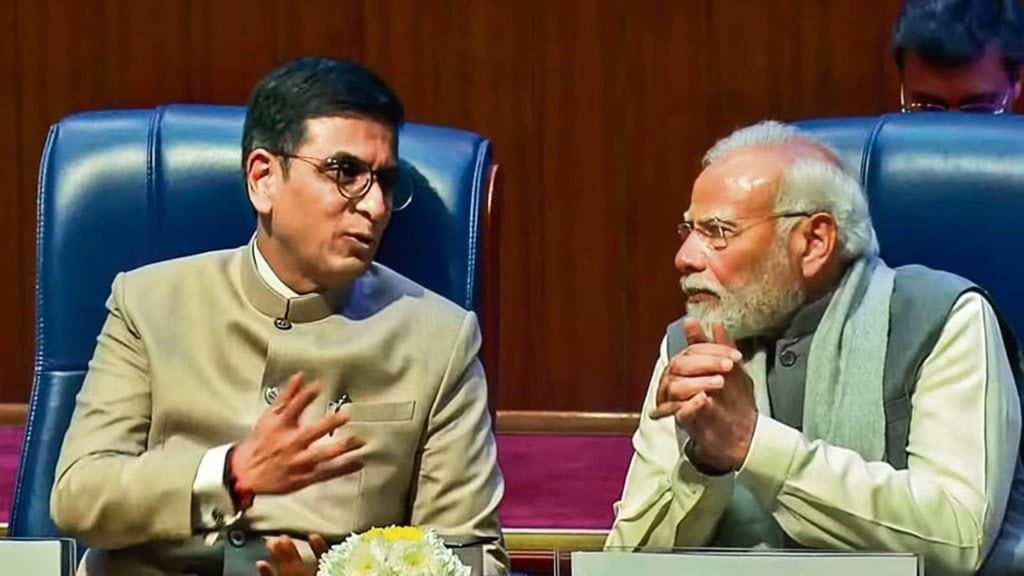
Why in News?
The festival of Ganesh Chaturthi, celebrated with enthusiasm across the country, exemplifies how faith, culture, and collective spirit can unite people from diverse backgrounds. However, in recent times, even festivals can become controversial, as illustrated by the debates surrounding the celebration of Ganesh Chaturthi by Prime Minister Narendra Modi and Chief Justice of India D.Y. Chandrachud. This incident underscores not only the rich cultural traditions of India but also the perceptions of personal and institutional interactions in the current political landscape.
Significance of Ganesh Chaturthi and Transformation of the Festival into a Public Celebration
- Historical and Cultural Roots of Ganesh Chaturthi
- Ganesh Chaturthi has its origins in ancient India, originally celebrated in private, familial contexts.
- In the 19th century, during the Indian independence movement, the festival evolved into a public event, thanks to Bal Gangadhar Tilak.
- Tilak aimed to unite Indians across social divides in the struggle against British colonialism by transforming the festival into communal gatherings.
- These public celebrations included prayers, processions, and performances, fostering social and political unity.
- Regional and National Celebrations: A Pan-Indian Festival
- Ganesh Chaturthi is celebrated enthusiastically from Mumbai's streets to Tamil Nadu's coastal temples, making it a true pan-Indian festival.
- Maharashtra, known for its grand celebrations, features large idols of Lord Ganesha in public spaces, neighborhoods, and homes.
- These elaborately crafted idols become central to community prayers and gatherings, with processions, music, dance, and communal feasts involving people from all walks of life.
- Inclusivity Beyond Religion: A Social and Civic Occasion
- The festival transcends religious boundaries, evolving into a social and civic event where individuals from various backgrounds participate.
- Neighborhoods organize events that are inclusive, welcoming everyone regardless of their faith or cultural identity.
An Analysis of Institutional Integrity and Personal Relations
- Critics' Concerns
- Some critics argue that the interaction between Modi and Chandrachud undermines democratic traditions and raises questions about institutional independence.
- However, these criticisms overlook the historical context of personal relationships between Indian leaders in both the judiciary and executive branches.
- Historical Precedents
- Historically, interactions between judicial and executive leaders have contributed positively to democracy.
- For instance, Chief Justice M.C. Chagla and Chief Minister Morarji Desai regularly met to discuss issues, and CJI Balakrishnan attended an Iftar hosted by former PM Manmohan Singh without controversy.
The Dangers of Politicising Personal Interactions
- Erosion of Public Trust in Democratic Institutions
- Democracies rely on public trust in elected officials, the judiciary, and the processes that maintain governance.
- When personal interactions are politicised, it diminishes trust in these institutions, which must function independently to uphold justice and governance.
- Undermining Democratic Functioning
- Politicising these interactions can weaken the essential functionality of democracy.
- Democracy thrives on the separation of powers, where branches must interact and collaborate effectively.
- If these interactions are framed as politically dubious, it leads to friction and hinders collaborative governance.
- Creating Divisive Narratives and Social Polarisation
- Politicising personal connections, especially during cultural events, fosters divisive narratives that exacerbate societal divisions.
- In a diverse India, where festivals typically encourage unity, such politicisation can alienate groups and deepen existing rifts.
- Dehumanising Public Figures
- Scrutinising the celebration between PM Modi and CJI Chandrachud overlooks their humanity and personal beliefs.
- This tendency to politicise every action risks reducing them to mere political symbols, making it difficult for the public to relate to them personally.
Conclusion
The celebration of Ganesh Chaturthi by PM Modi and CJI Chandrachud highlights the strength of Indian democratic institutions and the role of personal relationships in a healthy democracy. Instead of questioning the integrity of these interactions, we should celebrate the shared traditions that unite us. Festivals are meant to bring people together, and in this spirit, India can continue to thrive as a diverse and democratic nation.
GS2/International Relations
2nd Asia Pacific Ministerial Conference on Civil Aviation
Source: Indian Express
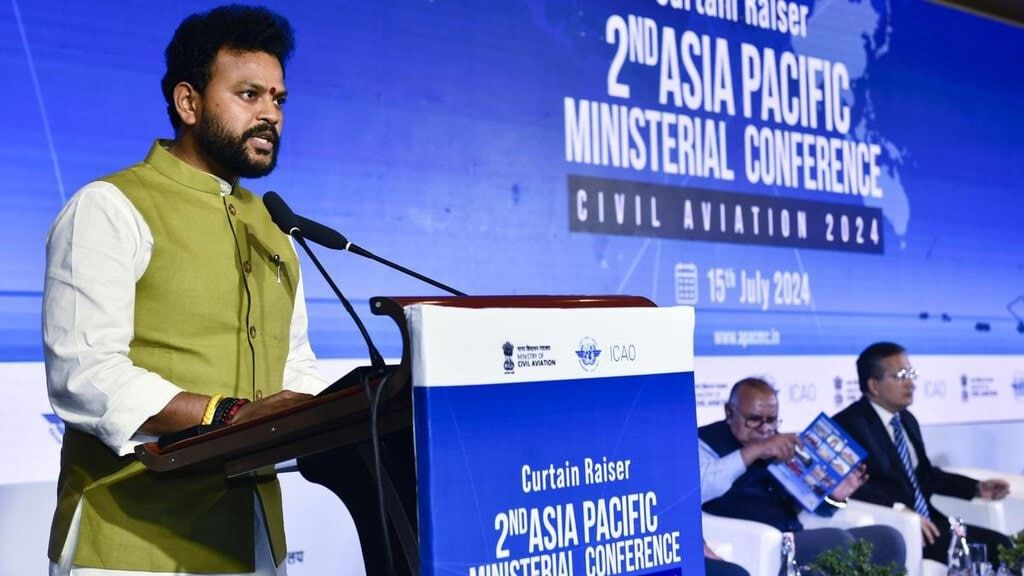
Why in news?
The 2nd Asia Pacific Ministerial Conference on Civil Aviation concluded with the adoption of the Delhi Declaration. This declaration serves as a comprehensive framework designed to bolster regional cooperation, tackle emerging challenges, and promote sustainable growth within the civil aviation sector. The two-day conference was organized by the Ministry of Civil Aviation in collaboration with the International Civil Aviation Organization (ICAO), featuring engaging discussions and presentations aimed at shaping the future of aviation in the Asia Pacific region.
Size
India has emerged as the world's third-largest aviation market and is one of the fastest-growing major aviation markets globally. Projections indicate it will surpass China and the United States to become the third-largest air passenger market by 2030, as per the International Air Transport Association (IATA).
Traffic Growth
In FY24, Indian airports anticipate domestic passenger traffic to reach 306.79 million, reflecting a 13.5% year-on-year growth, while international passenger traffic is expected to be 69.64 million, marking a 22.3% year-on-year increase.
Budget 2024-25
The budget for 2024-25 allocates Rs. 2,357 crore (approximately USD 282 million) to the Ministry of Civil Aviation.
Policy Decisions
The Indian government has sanctioned 100% Foreign Direct Investment (FDI) through the automatic route for the Maintenance, Repair, and Overhaul (MRO) sector.
NABH (NextGen Airports for Bharat)
This initiative aims to increase airport capacity significantly, allowing for billions of trips annually over the next 10-15 years.
AAI Startup Policy
This policy establishes a framework for interaction between the Airports Authority of India (AAI) and stakeholders, fostering innovation at airports and utilizing technology to improve service delivery to passengers.
Regulatory Frameworks for the Aviation Sector
- National Civil Aviation Policy (NCAP) 2016 guides the Indian aviation sector.
- The aviation policy in India is extensive, governed by the Aircraft Act of 1934 and the Aircraft Rules of 1937.
- The Directorate General of Civil Aviation (DGCA) serves as the statutory regulatory authority, addressing safety, licensing, and airworthiness issues.
- The Airports Authority of India (AAI) manages and operates airports and provides air traffic management services.
- The Bureau of Civil Aviation Security (BCAS) is tasked with establishing security standards for civil flights and airports.
- The Airport Economic Regulatory Authority (AERA) oversees tariffs and charges for aeronautical services at major airports, while also monitoring the performance standards of these services.
- The Regional Connectivity Scheme (RCS) - UDAN (Ude Desh ka Aam Naagrik) aims to make air travel more affordable and widespread by enhancing regional connectivity through financial incentives, subsidies, and infrastructural support.
Key Highlights of Speech Delivered by PM Modi
- PM Modi emphasized the importance of inclusivity in the aviation sector, noting that 15% of pilots in India are women, surpassing the global average of 5%.
- He remarked on the transformation of the aviation sector over the last decade, highlighting the increased participation of the lower and middle classes from smaller cities in air travel.
- PM Modi proposed the creation of an International Buddhist Circuit, aiming to connect significant Buddhist sites across Asia, which would benefit tourism and the civil aviation sector.
- He predicted that India will become a leading aviation hub by the end of the decade, citing the doubling of airports in the past 10 years and the substantial order of over 1,200 aircraft by Indian airlines.
- The PM also noted the potential for affordable air taxis in India, which would enhance urban mobility through advanced air mobility solutions.
- Additionally, he emphasized the government's initiative to promote the use of drones in agriculture, highlighting the training of numerous drone pilots under the "drone didi" scheme.
GS2/Polity
Dissolution of Standing Committee on Statistics (SCoS)
Source: The Hindu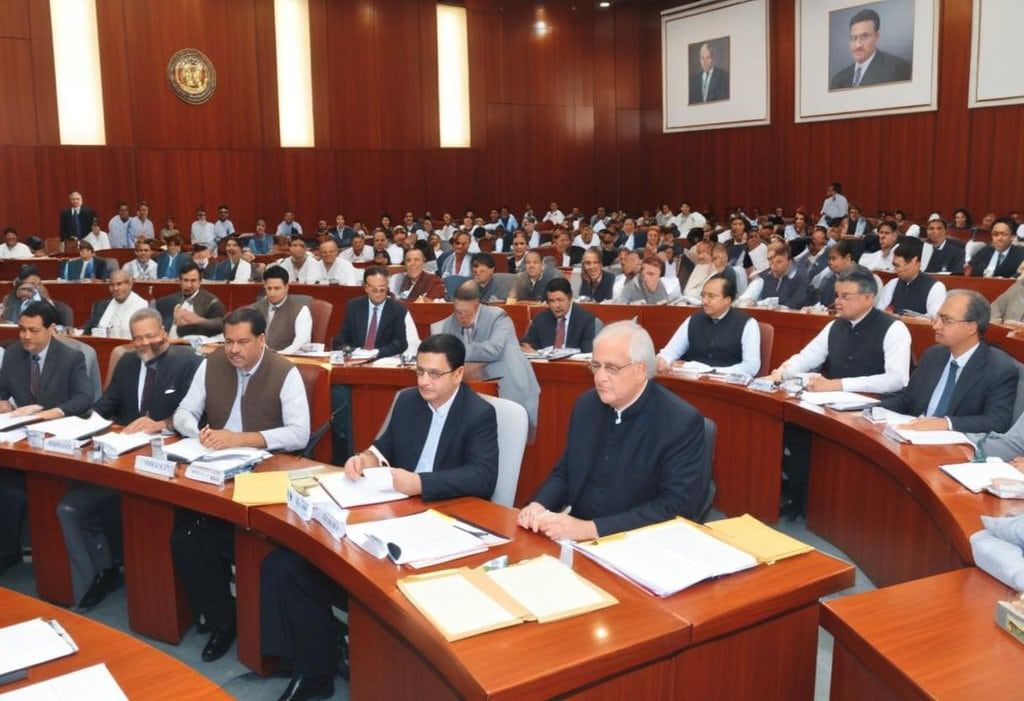
Why in news?
The Union Ministry of Statistics and Programme Implementation has announced the dissolution of the 14-member Standing Committee on Statistics (SCoS), headed by economist Pronab Sen. The government explained that the work of this committee was overlapping with that of the Steering Committee for National Sample Surveys, chaired by Rajeeva Laxman Karandikar, which led to its disbandment.
Statistical System of India
- Overview
- The statistical system in India is crucial for the collection, processing, analysis, and dissemination of data necessary for effective planning, policy-making, and governance.
- This system operates in a decentralized manner, with responsibilities distributed between Central and State governments, encompassing various sectors such as economics, agriculture, industry, demography, and health.
- Constitutional Division of Responsibilities
- The statistical framework in India is shaped by the constitutional distribution of powers among the Union, State, and Concurrent Lists as detailed in the 7th Schedule.
- Each government department, whether at the central or state level, typically manages the statistics pertaining to its specific area of focus.
- For instance, both the Union and State governments can collect data related to education and labor welfare, which are listed under the concurrent list.
- However, to prevent duplication and ensure consistency, central agencies usually collaborate with state bodies.
- Institutions Involved
- Ministry of Statistics and Programme Implementation (MoSPI)
- Established as an independent ministry in 1999 following the merger of the Department of Statistics and the Department of Programme Implementation.
- National Statistical Office (NSO)
- Responsible for the planning and coordination of the national statistical system.
- Formed in 2019 by merging the National Sample Survey Office (NSSO) and the Central Statistical Office (CSO).
- National Statistical Commission (NSC)
- Established based on the recommendations of the Rangarajan Commission to ensure the quality and reliability of statistics.
- Functions as an advisory body aimed at enhancing the statistical framework in India.
- Reserve Bank of India (RBI)
- Involved in gathering banking and financial statistics for economic policy analysis.
- State Statistical Bureaus (SSBs)
- Each state maintains its own statistical departments that work together with central agencies to ensure data consistency.
- Ministry of Statistics and Programme Implementation (MoSPI)
- Regulatory Framework
- The Collection of Statistics Act, 2008
- Regulates the gathering of statistics across different sectors.
- Census Act, 1948
- Provides guidelines for the decennial Census of India, a primary source of demographic and socio-economic data.
- The Collection of Statistics Act, 2008
- Challenges
- Data Quality and Timeliness
- Concerns persist regarding the accuracy and promptness of data, especially with delays in critical surveys like the decennial Census.
- Capacity Constraints
- State statistical agencies frequently face challenges with insufficient manpower, funding, and infrastructure, hindering effective data collection and processing.
- Coordination Issues
- The decentralized nature of the system can lead to coordination problems between central and state statistical bodies, affecting data consistency and integration.
- Technological Adoption
- While there have been efforts to digitize processes, there is a pressing need for advanced data collection and processing technologies to enhance efficiency and accuracy.
- Political Interference
- Allegations of political pressure and manipulation have emerged, particularly regarding sensitive data like unemployment and GDP, undermining the credibility of official statistics.
- Lack of Uniformity
- Diverse methodologies employed by various departments can lead to inconsistencies in data gathering and reporting.
- Data Quality and Timeliness
- Recent Controversy
- The central government has stated that data from the EPFO and ESIC regarding enrollments, along with the RBI's KLEMS database, presents an overly positive view of the employment situation in the country.
- However, there are concerns that administrative data, particularly in labor statistics, is based on thresholds and may not provide an accurate representation.
- Critics argue that such data reflects governmental perspectives rather than real conditions, with high potential for manipulation since it is generated by government agencies.
- In contrast, survey-based data, including census results, offers comprehensive coverage without thresholds, thus providing a broader analytical foundation.
New committee replacing SCoS
The Standing Committee on Economic Statistics (SCES) was initially established in December 2019. In July 2023, it was rebranded as the Standing Committee on Statistics (SCoS) to provide guidance on surveys as needed by MoSPI.
- Function of SCoS
- The SCoS advised the government on survey methodologies, including sampling design, survey instruments, and question formulation.
- It was instrumental in finalizing survey tabulation plans, evaluating existing frameworks, and addressing issues related to survey results and methodologies.
- The committee also guided pilot surveys, explored administrative statistics, identified data gaps, and made recommendations for additional data needs while providing technical support to central and state agencies in conducting surveys.
- Composition of the New Committee
- The newly formed Steering Committee, which takes the place of SCoS, consists of 17 members along with a non-member secretary.
- Its two-year term and terms of reference largely mirror those of the SCoS, including the review of survey results, methodologies, sampling designs, and the finalization of tabulation plans for National Sample Surveys.
- The primary distinction between the two committees lies in their composition; the Steering Committee includes more official members, whereas SCoS had a greater number of non-official members, resulting in some overlap in their functions.
GS2/Governance
What does the dissolution of SCoS entail?
Source: The Hindu
Why in News?
The Union Ministry has dissolved the Standing Committee on Statistics (SCoS), which was led by eminent economist and former chief statistician Dr. Pronab Sen, due to overlapping responsibilities with the newly established Steering Committee for National Sample Surveys.
Why was the SCoS dissolved?
- Overlapping Responsibilities: The main reason for the SCoS's dissolution was the redundancy of its functions with those of the newly formed Steering Committee, which is responsible for overseeing national sample surveys.
- Concerns Raised by Members: Members of the SCoS frequently expressed their concerns regarding delays in conducting the census, which is vital for policymakers.
- Lack of Communication: Dr. Pronab Sen highlighted that members were not given clear reasons for the committee's dissolution, raising concerns about transparency in decision-making.
What are the main roles of the new Steering Committee?
- Advisory Role: The Steering Committee will provide advice to the Ministry on survey methodologies, including sampling frames, designs, and survey instruments, similar to the previous SCoS.
- Finalizing Tabulation Plans: It will play a crucial role in developing tabulation plans for various national sample surveys, ensuring that the collected data is organized effectively.
- Reviewing Methodologies: The committee will review methodologies, subject results, and questionnaires related to national sample surveys to maintain the statistical rigor established by the SCoS.
- Tenure and Composition: The Steering Committee comprises 17 members, including at least four from the SCoS, and will serve a term of two years.
How do the SCoS and the Steering Committee differ?
- Membership Composition: The Steering Committee includes more official members than the SCoS, which had several non-official members. This change may affect the committee's dynamics and perspectives.
- Mandate Overlap: While both committees share similar mandates regarding survey methodologies and data collection, the Steering Committee is expected to focus more on operational aspects of national sample surveys, potentially leading to greater efficiency.
- Response to Criticism: The establishment of the Steering Committee seems to address criticisms of India's statistical system, aiming to resolve survey-related issues more effectively than the SCoS could.
How does the SCoS’s dissolution impact statistical data quality?
- Delay in Census Data: The dissolution of the SCoS amidst ongoing delays in conducting the census raises concerns about the availability of reliable and current data. The last census was held in 2011, and reliance on outdated data can adversely affect policymaking and the distribution of welfare benefits.
- Quality of Administrative Data: Critics argue that the administrative data the government relies upon may not accurately reflect employment scenarios, as it is often based on thresholds and is prone to manipulation, leading to a distorted view of the economic situation.
- Need for Comprehensive Data: The census is essential for providing detailed demographic, economic, and social data, which are crucial for effective policy formulation. The lack of updated census data hampers the government's ability to address issues such as employment, poverty, and social welfare.
Way forward:
- Reinstate Independent Oversight: It is important to establish an independent statistical body with defined roles to ensure transparency, timely data collection, and oversight of key surveys like the census, thereby addressing concerns regarding data reliability.
- Modernize Data Collection: Utilizing technology to enhance and expedite the census and national surveys is crucial to ensure that updated and accurate data is available for policymaking and welfare distribution.
GS2/Polity
Commission for Scientific and Technical Terminology (CSTT)
Source: The Hindu
Why in news?
The Indian government has initiated measures to enhance education in Indian languages, particularly in technical fields such as engineering and medicine, as part of the National Education Policy (NEP) 2020. A significant initiative under this policy is the "AICTE Technical Book Writing and Translation" project, which aims to produce technical textbooks in 12 scheduled Indian languages. The Commission for Scientific and Technical Terminology (CSTT) plays a critical role in standardizing technical and scientific terms in these languages.
Background:
- The Indian government is promoting education in regional languages to align with NEP 2020.
- One key initiative is the "AICTE Technical Book Writing and Translation" project, aimed at creating technical textbooks in 12 regional languages.
- CSTT is essential for standardizing technical and scientific terminology to facilitate clear communication.
About CSTT:
- CSTT was founded in October 1961 to standardize scientific and technical terms in Indian languages.
- It aims for uniformity and clarity in communication across various disciplines.
- The commission publishes bilingual, trilingual, and multilingual glossaries, definitional dictionaries, and monographs.
- Quarterly journals like 'Vigyan Garima Sindhu' and 'Gyan Garima Sindhu' are also produced by CSTT.
- Collaboration with Granth Academies, textbook boards, and publication cells is part of CSTT’s efforts to publish university-level textbooks in Indian languages.
- The commission also provides administrative and departmental glossaries used by government departments and research institutions.
The ‘Shabd’ Glossary Platform:
- CSTT has developed an online platform called ‘Shabd’, which serves as a central repository for technical and scientific terminology in Indian languages.
- Accessible at https://shabd.education.gov.in, this platform hosts all glossaries in a searchable digital format.
- Other organizations can upload their dictionaries, making it a comprehensive resource for standardized terminology.
- Users can search for terms by language, subject, and dictionary type, and they can also provide feedback on the terms.
- This platform aims to unify technical terms across various disciplines.
The Process of Term Standardization:
- Expert Advisory Committees composed of subject experts, linguists, and language specialists prepare the terminologies on the 'Shabd' platform.
- These committees identify equivalent terms in Indian languages for specific subjects.
- Once confirmed, these terms are disseminated to institutions like Granth Academies, NCERT, NTA, and various textbook boards.
- The platform includes terms from multiple reference materials, including dictionaries and glossaries compiled by CSTT.
- Launched in March 2024, the ‘Shabd’ portal has received considerable attention, with over 136,968 hits from users worldwide.
Terms & Disciplines Covered:
- The portal currently includes about 322 glossaries with 2,184,050 headwords across various disciplines.
- Disciplines covered include:
- Humanities
- Social Sciences
- Medical Sciences
- Engineering
- Agricultural Sciences
- More than 60 subjects are represented, including:
- Journalism
- Public Administration
- Chemistry
- Botany
- Zoology
- Psychology
- Physics
- Economics
- Ayurveda
- Mathematics
- Civil and Electrical Engineering
- Computer Science
- Political Science
- Agriculture
- Transport
- Geology
- Cell Biology
- Forestry
Future Plans:
- CSTT plans to incorporate Artificial Intelligence (AI) and other digital technologies to enhance the development of standardized terminology.
- This initiative aims to ensure that Indian languages evolve in tandem with advancements in education and technology.
Conclusion:
- The CSTT is pivotal in promoting education in Indian languages by standardizing technical terms across diverse disciplines.
- With the introduction of the ‘Shabd’ platform and a commitment to leveraging modern technologies, CSTT is contributing to India's vision of accessible and effective education in regional languages, in line with the National Education Policy 2020.
GS1/History & Culture
The Great Stupa of Sanchi
Source: Indian Express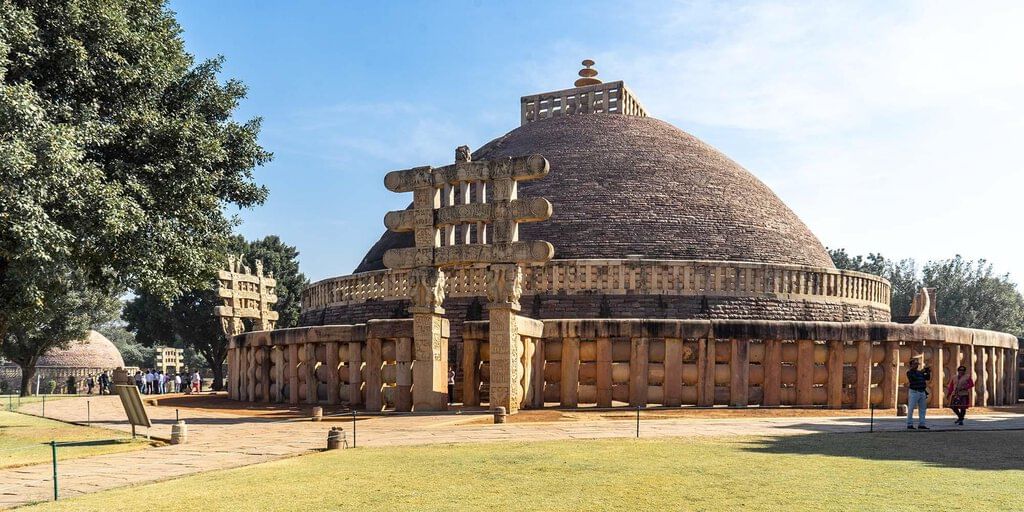
Why in News?
During his recent visit to Germany, the External Affairs Minister of India visited the replica of the East Gate of Sanchi's Great Stupa, which is located in front of the Humboldt Forum Museum in Berlin.
Meaning:
- In Buddhism, a stupa is a dome-shaped structure that houses relics, typically the remains of the Buddha and other significant Buddhist figures, and serves as a meditation site.
Origin:
- Initially, stupas were simple burial mounds from pre-Buddhist India, lacking any religious significance and primarily serving as memorials.
Structure:
- Expansion under Ashoka (250 BCE): According to Buddhist tradition, Emperor Ashoka excavated the Buddha's relics from earlier stupas and built 84,000 stupas across India to distribute these relics.
- Decorated stupas (from 125 BCE):
- Stupas began to be adorned with intricate sculptural reliefs, examples include:
- Bharhut (115 BCE)
- Bodh Gaya (60 BCE)
- Mathura (125–60 BCE)
- Sanchi (noted for its ornate toranas)
- Development in Gandhara (3rd century BCE - 5th century CE): As Buddhism spread through Central Asia, China, Korea, and Japan from Gandhara, the stylistic evolution of the Gandharan stupa significantly influenced Buddhist architecture.
- Significance: The design of the truncated pyramid-shaped temple may have been inspired by the earlier stepped stupas from Gandhara, with the Mahabodhi Temple in Bodh Gaya being a notable example.
The Great Stupa of Sanchi:
- About:
- Commissioned by Emperor Ashoka in the 3rd century BCE, the Great Stupa is the oldest stone structure in India and is renowned as one of the best-preserved groups of Buddhist monuments.
- It was constructed over the relics of the Buddha and his two chief disciples, Sariputra and Maudgalyayan.
- The latest construction at Sanchi can be traced back to the 12th century CE, after which the site fell into disuse.
- British General Henry Taylor rediscovered the Sanchi Stupa in 1818, and Alexander Cunningham conducted the first formal survey and excavations at the site in 1851.
- In the 1910s, ASI director-general John Marshall restored the site with financial support from the begums of Bhopal.
- In 1989, it was designated as a UNESCO World Heritage Site.
- Location:
- The stupa is situated on a hilltop in Sanchi Town, Raisen District, Madhya Pradesh, providing a significant area for studying the evolution and decline of Buddhist art and architecture in India.
- Gateways/Toranas of the Great Stupa:
- Originally, the stupa was a simple hemispherical structure topped with a chhatra (parasol), but four elaborate gateways or toranas were added in the 1st century BCE.
- These gateways were constructed during the reign of the Satavahana dynasty and are adorned with intricate sculptures depicting various scenes from the life of the Buddha and Jataka tales.
- The artistry is remarkable for its rhythm, symmetry, visual beauty, and detailed representation of floral and plant motifs.
The East Gate of the Sanchi Stupa and its Replica:
- Features:
- The upper architrave of the East Gate illustrates the seven Manushi Buddhas, with the historical Buddha being the most recent.
- The middle architrave portrays the Great Departure, depicting Prince Siddhartha's journey from Kapilavastu to seek enlightenment.
- The lower architrave shows Emperor Ashoka visiting the Bodhi tree, where the Buddha achieved enlightenment.
- Additional decorative elements include shalabhanjika (a fertility symbol represented by a yakshi holding a tree branch), elephants, winged lions, and peacocks.
- Why is the East Gate the most famous of the Sanchi toranas in Europe?
- The East Gate gained prominence due to its plaster cast created by Lieutenant Henry Hardy Cole for the Victoria and Albert Museum in London during the late 1860s.
- This cast was replicated and displayed across Europe, including the most recent replica in Berlin, which traces its origins back to Cole's original cast.
GS3/Economy
PM E-Drive Scheme
Source: Mint
Why in News?
The Union Cabinet has recently sanctioned the PM Electric Drive Revolution in Innovative Vehicle Enhancement (PM E-Drive) Scheme, allocating a budget of ₹10,900 crore over a span of two years.
About PM E-DRIVE Scheme
- Name: PM Electric Drive Revolution in Innovative Vehicle Enhancement (PM E-DRIVE) Scheme
- Total Outlay: ₹10,900 crore for a duration of two years
- Goal:
- To foster electric mobility, mitigate pollution, and bolster fuel security.
- To alleviate range anxiety by establishing charging infrastructure in urban areas and along highways.
- Incentives:
- Direct subsidies will be offered for electric two-wheelers (e-2Ws), three-wheelers (e-3Ws), e-buses, e-ambulances, and e-trucks.
- Key Components:
- ₹3,679 crore allocated for demand incentives for e-2Ws, e-3Ws, e-ambulances, and e-trucks.
- ₹500 crore designated specifically for e-ambulances.
- ₹4,391 crore earmarked for e-buses.
- Other Components:
- E-Vouchers:
- Aadhaar-authenticated e-voucher to facilitate EV purchases; requires signatures from both the buyer and dealer for incentive claims.
- E-Bus Procurement:
- Provision for 14,028 e-buses across nine major cities including Delhi, Mumbai, Kolkata, Chennai, Ahmedabad, Surat, Bangalore, Pune, and Hyderabad.
- Charging Infrastructure:
- ₹2,000 crore allocated for establishing 72,300 public EV charging stations, including fast chargers for e-4Ws, e-buses, e-2Ws, and e-3Ws.
- Incentivizing E-Trucks:
- Linked to scrapping certificates from approved scrapping centers under the Ministry of Road Transport and Highways (MoRTH).
- Testing and Upgradation:
- ₹780 crore allocated for enhancing the testing capabilities of Motor Vehicle Inspection agencies to support green mobility technologies.
- E-Vouchers:
PYQ:
[2019] How is efficient and affordable urban mass transport key to the rapid economic development in India?
|
38 videos|5293 docs|1118 tests
|
FAQs on UPSC Daily Current Affairs: 13th September 2024 - Current Affairs & Hindu Analysis: Daily, Weekly & Monthly
| 1. What is the significance of India's participation in European Hydrogen Week? |  |
| 2. What are the potential benefits of introducing a Universal Basic Income (UBI) in India? |  |
| 3. How does the dissolution of the Standing Committee on Statistics (SCoS) affect statistical governance in India? |  |
| 4. What role does the Commission for Scientific and Technical Terminology (CSTT) play in India's education system? |  |
| 5. Why is the Great Stupa of Sanchi considered a UNESCO World Heritage Site? |  |





















